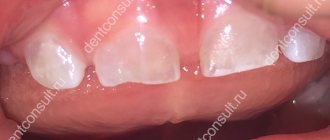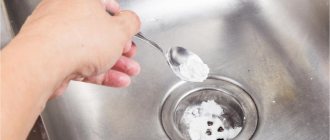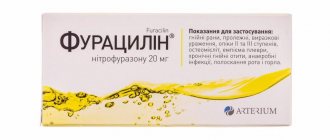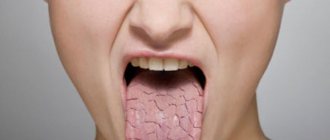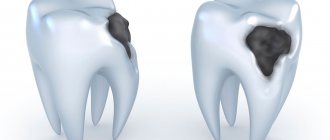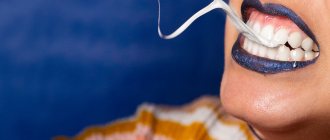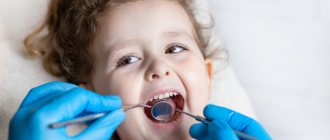Yellow teeth are a dental problem that adults often face. But you should know that the possibility of naturally having snow-white teeth is zero. The shade of skin, hair, eyes and teeth is formed from the birth of the baby, and you need to accept this as a fact.
Most of us think that a smile is naturally snow-white. But if you ask your dentist what shade healthy enamel should be, he will answer completely unexpectedly for our understanding - yellowish. And this is the truth.
Reasons for changing the shade of enamel
Conventionally, the reasons that teeth become yellow or dark can be divided into two main groups: external influences (food dyes, smoking, poor hygiene) and internal influences (health conditions, removal of the dental nerve, etc.). Let's look at them in more detail.
Nutritional Features
Quite often, the enamel turns yellow or darkens due to regular exposure to drinks and products that contain coloring pigments - coffee, tea, seasonings, chocolate, beets, etc. Coloring substances accumulate in the micropores of tooth enamel and dentin, which leads to a change in shade teeth.
Environmental factors
Tooth enamel can change its shade as a result of extremely poor ecology, when a person works in hazardous industries and consumes bad water, in particular, with a high fluoride content (white spots appear). Darker shades can form when the body is exposed to lead, bromine, mercury and other hazardous substances.
Hygiene factors
Poor oral hygiene leads to discoloration of teeth due to plaque formation. It occurs due to irregular, poor-quality cleaning or due to incorrectly selected products. As a result, the enamel becomes darker due to the accumulation of large amounts of deposits.
Age-related changes
Over the years, tooth enamel becomes thinner, through which darker dentin begins to show through. It is for this reason that yellow teeth appear in most people in old age.
Various diseases and their treatment
Another common cause of darkening of the enamel is diseases of the internal organs, as well as their treatment with certain drugs. The use of certain types of antibiotics, for example, tetracycline, leads to the appearance of dark stripes on the enamel (especially if it was taken during the formation of the child’s teeth during intrauterine development or their growth in the first years of life). With fluorosis, white spots may appear on the enamel, which over time become yellow-brown.
On a note! In the absence of the dental nerve (pulp), the tooth darkens over time - this is a completely normal and physiological process. Unfortunately, whitening is usually not effective in this situation, so it is worth considering the installation of veneers or lumineers.
If the tooth becomes red, this indicates damage or inflammation of the dental nerve, which requires surgical treatment by a dentist.
Bad habits
Smoking causes permanent plaque to form on the surface of the teeth, causing them to turn yellow. If you can’t give up the habit, you should strengthen your oral hygiene, as well as regularly carry out comprehensive professional hygiene at the dentist - every 3-5 months to better cleanse your teeth of plaque.
How to get rid of yellow teeth
It is quite difficult to do this on your own. Without knowing the cause, you can cause even more harm. So, on the Internet you can find advice on applying soda slurry to cleanse yellow teeth. But this is a very aggressive way
, which should be used with caution, no more than once a week. Even so, there is a risk of developing stomatitis. The same can be said about citric acid and hydrogen peroxide. Complications from their use may outweigh the whitening effect.
Whitening pastes, strips or gels are safer. But they are not as effective as the methods used in dentistry. These include:
- Plaque removal
Air Flow procedures, laser and ultrasonic cleaning remove soft plaque, and with it light yellowing of the teeth. In this case, the enamel is not damaged, but the lightening effect is small.
- Professional whitening
You can clean yellow teeth in the dentist's office using gels, the action of which is activated as a result of chemical reactions or exposure to light. You can whiten yellow teeth up to 10 shades.
- Veneers
If it is not possible to clean yellow teeth, you can put thin ceramic onlays on them - veneers. To do this, the teeth are prepared and the top layer of enamel is removed. So, veneers are forever, you can’t refuse them, that’s why they are installed only for adults. But the aesthetic effect is very strong. The smile becomes radiant.
- Crowns
It is best to disguise the yellow color of teeth outside the smile zone with crowns. Modern composite materials are indistinguishable from natural enamel, and their strength is superior to natural fabrics.
If your teeth have turned yellow, the best advice is to visit your dentist. He will determine the causes and prescribe appropriate treatment.
Rules for children's dental hygiene
The first oral hygiene procedures begin after the baby has cut his first tooth. During this period, the brush is not yet used, and the gums are wiped with a damp cloth. When several teeth erupt, you can begin hygiene with the help of a special baby brush. It should be very soft and delicately clean the delicate surface of children's teeth. When a child reaches 2.5 years of age, he is taught to practice brushing independently, at first without toothpaste. When the baby masters this procedure, you can use special baby pastes, which are designed for the fact that the baby has not yet learned to spit out the paste and will periodically swallow it. Children's pastes should be free of dyes, flavorings and fragrances.
Special diet
It is believed that apples and raw carrots are the best teeth cleaners. These products perfectly remove plaque and supply a huge amount of useful substances to the body. Therefore, you should not limit yourself to them.
The LeaderStom network of clinics offers the services of the best pediatric dentists in Moscow. If you seek professional help in time, the condition of your child’s teeth can be correctly corrected with a course of treatment or preventive measures. Experienced therapists and orthopedists will help eliminate pathological yellowness of teeth and straighten your baby’s bite if indicated. Contact us, we are always ready to help.
Clinical researches
Multiple clinical studies have proven the effectiveness of Asept products. For example, as part of the tests, it was found that the two-component mouth rinse ASEPTA ACTIVE more effectively combats the causes of inflammation and bleeding compared to single-component rinses - it reduces inflammation by 41% and reduces bleeding gums by 43%.
Clinical studies have also proven that regular use of professional toothpaste ASEPTA REMINERALIZATION improved the condition of the enamel by 64% and reduced tooth sensitivity by 66% after just 4 weeks.
Clinical studies have proven that regular use of preventive toothpaste ASEPTA SENSITIVE for a month can reduce bleeding gums by 62%, reduce the sensitivity of teeth and gums by 48% and reduce inflammation by 66%.
Sources:
- Report on determining/confirming the preventive properties of toothpaste “ASEPTA PLUS” GENTLE WHITENING” Author: doctor-researcher A.A. Leontyev, head Department of Preventive Dentistry, Doctor of Medical Sciences, Professor S.B. Ulitovsky First St. Petersburg State Medical University named after. acad. I.P. Pavlova, Department of Preventive Dentistry
- Clinical and laboratory assessment of the influence of domestic therapeutic and prophylactic toothpaste based on plant extracts on the condition of the oral cavity in patients with simple marginal gingivitis. Doctor of Medical Sciences, Professor Elovikova T.M.1, Candidate of Chemical Sciences, Associate Professor Ermishina E.Yu. 2, Doctor of Technical Sciences Associate Professor Belokonova N.A. 2 Department of Therapeutic Dentistry USMU1, Department of General Chemistry USMU2
- Report on the determination/confirmation of the preventive properties of personal oral hygiene products “ASEPTA PLUS” Remineralization doctor-researcher A.A. Leontyev, head Department of Preventive Dentistry, Doctor of Medical Sciences, Professor S.B. Ulitovsky First St. Petersburg State Medical University named after. acad. I.P. Pavlova, Department of Preventive Dentistry
- Clinical studies of antisensitive toothpaste “Asepta Sensitive” (A.A. Leontyev, O.V. Kalinina, S.B. Ulitovsky) A.A. LEONTIEV, dentist O.V. KALININA, dentist S.B. ULITOVSKY, Doctor of Medical Sciences, Prof. Department of Therapeutic Dentistry, St. Petersburg State Medical University named after. acad. I.P. Pavlova
- The role of anti-inflammatory rinse in the treatment of periodontal diseases (L.Yu. Orekhova, A.A. Leontyev, S.B. Ulitovsky) L.Yu. OREKHOVA, Doctor of Medical Sciences, Prof., Head of Department; A.A. LEONTIEV, dentist; S.B. ULITOVSKY, Doctor of Medical Sciences, Prof. Department of Therapeutic Dentistry of St. Petersburg State Medical University named after. acad. I. P. Pavlova
- Report on determining/confirming the preventive properties of toothpaste “ASEPTA PLUS” COFFEE and TOBACCO Author: doctor-researcher A.A. Leontyev, head Department of Preventive Dentistry, Doctor of Medical Sciences, Professor S.B. Ulitovsky. First St. Petersburg State Medical University named after. acad. I.P. Pavlova, Department of Preventive Dentistry
- Report on determining/confirming the preventive properties of commercially produced personal oral hygiene products: Asepta toothpaste used in combination with Asepta mouthwash and Asepta gum balm Head. Department of PFS Doctor of Medical Sciences Professor S.B. Ulitovsky St. Petersburg State Medical University named after Academician I.P. Pavlova. Faculty of Dentistry. Department of Preventive Dentistry.
Associated symptoms
The periodic and short-term presence of yellow plaque on the teeth is almost never accompanied by other symptoms. There may only be an unpleasant odor from the mouth, which is easily eliminated after a thorough and high-quality brushing of the teeth.
But sometimes unpleasant signs appear that may indicate that yellow plaque is only part of the problem you are dealing with:
- Halitosis. This is bad breath, which only becomes less noticeable for a while after hygiene procedures, but does not disappear completely. In this case, we may be talking about an infectious process in the gums or tooth.
- Swelling and loosening of the gums. This symptom is often accompanied by hard plaque localized in the cervical part of the tooth (at the border between the tooth and the gum). Under the influence of gravity, it gradually lowers, moving the gums back and disrupting vital processes in it, which changes the contour of the gums, leading to their downward displacement and swelling.
- Increased sensitivity of teeth. When consuming food or drinks that are colder or hotter in relation to body temperature, when inhaling cold air through the mouth, or when eating sour or salty food, teeth may become set on edge. This indicates that the activity of bacteria present in plaque has led to thinning or destruction of the enamel.
- Pain. This symptom is most often observed when yellow plaque on a tooth is constantly in the same place, but nothing similar is observed on the remaining teeth. In this case, plaque can “mask” caries - food particles constantly accumulate in the carious cavity, which are difficult to remove by brushing the teeth. And after some time, such plaque mineralizes, but underneath it the process of tooth destruction by caries continues, which sooner or later begins to manifest as pain.
How to prevent plaque formation?
As you know, the best treatment for diseases is their prevention. To prevent unaesthetic plaque on your teeth from bothering you and making you suffer in the dentist’s chair, remember a few rules that will help keep your teeth white, strong and smooth:
- Give up bad habits. No matter how trivial it may sound, it is smoking and alcohol abuse that are the strongest enemies of enamel. Put out the cigarette once and for all, minimize the consumption of wine, beer, vodka and other strong drinks, and within a couple of months you will notice that the condition of your teeth has noticeably improved.
- Review your diet . Coffee, soda, sweet juice and black tea are not at all safe for your teeth, even if you drink them through a straw. And caramels, toffees, cakes and chocolates not only leave an unpleasant coating on the enamel, but also provoke tooth decay. Include more fresh fruits, vegetables, and herbs in your diet - these are the foods that allow you to cleanse crowns naturally; in addition, plants strengthen the body.
- Don't write off sugar-free candies and chewing gum . These products activate salivation.
- Remember the rules of personal hygiene . Brushing your teeth twice a day is the key to healthy enamel, crowns, gums and nerves. Choose your toothpaste carefully, brush every square millimeter, be mindful of the space between your teeth, and be sure to remove the film from your tongue.
Effective and safe teeth whitening and cleansing of surface enamel stains is provided by Asepta Plus gentle whitening toothpaste. This paste has a unique multi-stage teeth cleaning system that guarantees whitening for 4 weeks without damaging the tooth enamel. Hydroxyapatite and potassium citrate, which are part of the paste, mineralize weakened tooth enamel, prevent the occurrence of increased tooth sensitivity, and calamus and eleutherococcus extracts strengthen the gums and accelerate the regeneration processes of the oral mucosa.
Why do teeth turn yellow and how to whiten them?
Dentists identify many different reasons that can cause darkening of tooth enamel - both natural and external. For example, why are fangs yellower than other teeth? Their structure is more dense, but the enamel itself does not have a specific color, so the shade of the teeth is determined by a deep layer called dentin. Due to the fact that the thickness of this layer is greatest in fangs, the color is more pronounced, and therefore the teeth appear more yellow than those next to them. Other common factors include the following:
- frequent consumption of products containing artificial colors;
- eating natural foods that can change the color of enamel;
- smoking;
- use of tetracycline over a long period of time;
- excess fluoride in the body (high fluoride content in daily consumed water can lead to the development of a disease called fluorosis);
- disorders associated with the functioning of the gallbladder and liver;
- natural aging processes.
